Interview with painter Erin Loree (E.L) by Simon Termine (S.T)
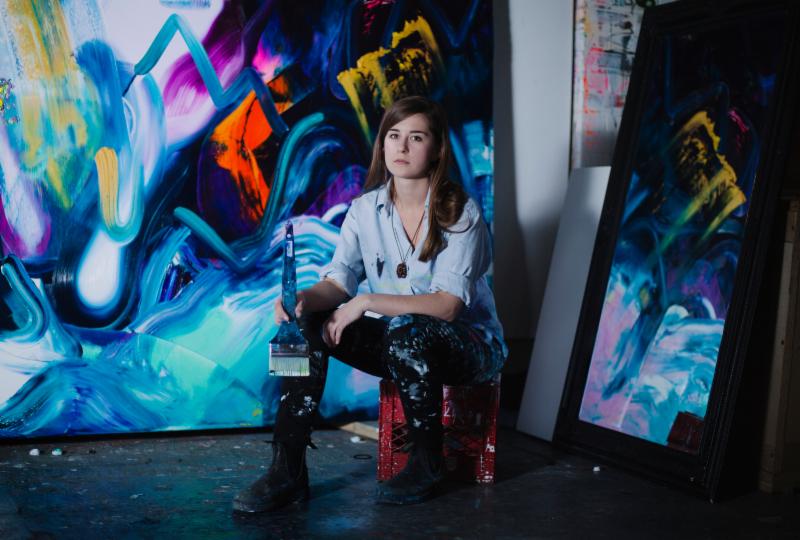 Erin Loree in her studio. Image courtesy of Angell Gallery
Erin Loree in her studio. Image courtesy of Angell Gallery
This interview took place on the occasion of Erin Loree’s first solo show at Angell Gallery, titled Midnight Bloom.
S.T: You undertook a residency in the Peruvian Amazon where you witnessed “inner states and transformation” through the natural world. How has that influenced you?
E.L: Before I left for the Amazon, I went on a silent meditation retreat where we learned and practiced Vipassana meditation: to see things as they really are. It is a way of self-transformation through self-observation and focuses on the deep interconnection between mind and body. We learned to quiet and sharpen the mind so that we could feel the most subtle of sensations arising and passing in the body while openly observing our reactions and sensations. This helps you to understand, experientially, that everything in life arises and passes – that everything is impermanent. But in order for this understanding to be beneficial, one has to also have the wisdom of how to apply to his or her life.
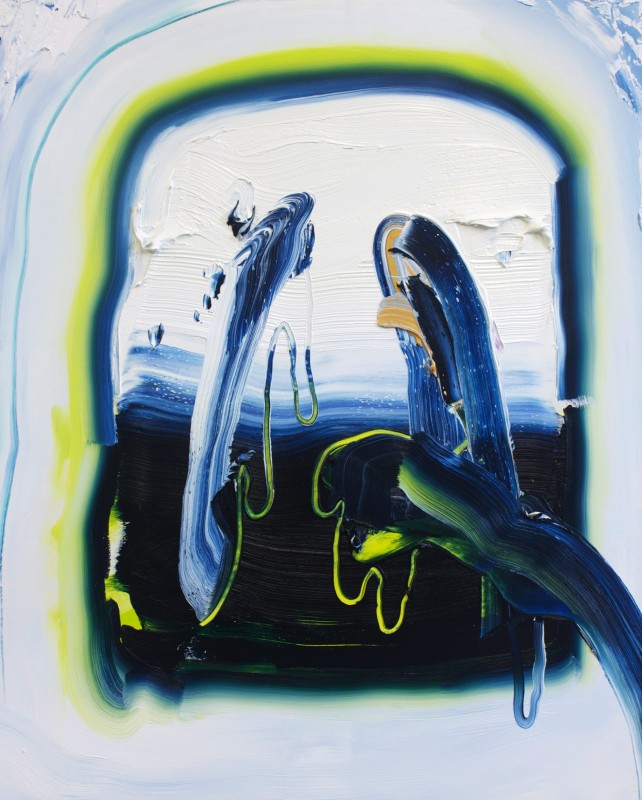 Erin Loree, Mirroring, 2015, oil on panel, 30″ x 24″. Image courtesy of Angell Gallery
Erin Loree, Mirroring, 2015, oil on panel, 30″ x 24″. Image courtesy of Angell Gallery
It wasn’t until I was immersed in the natural world that I began to gain some wisdom and insight into the nature of impermanence. For the first time in my life I watched plants, insects, and animals come into being, expand and contract, die and decay. I had to surrender and begin to flow with life instead of pushing up against it. I saw that everything begins with a thought and our body responds, consciously or unconsciously. If you really observe its reactions, you’ll see that the body responds with fear, aversion, or clinging. This understanding that everything is always changing really alters a person’s fundamental view of life, dissolving the anxiety and skepticism.
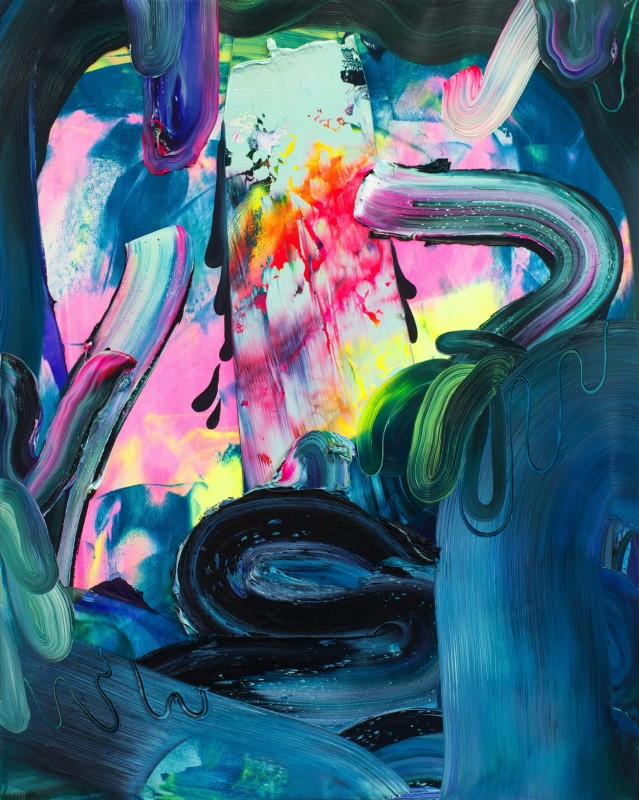 Erin Loree, Cactus, oil on panel, 30″ x 24″. Image courtesy of Angell Gallery
Erin Loree, Cactus, oil on panel, 30″ x 24″. Image courtesy of Angell Gallery
S.T: What was the transition from figurative to abstract aesthetics like for you?
It’s an unusual story, but I’m so grateful for what happened. A couple of days before I began my thesis year at OCAD U, I broke the third metatarsal in my foot. I had crutches for four months – the entire first semester of thesis. I wanted to explore and create grand paintings, but this physical limitation really determined the kind of work I could make. I couldn’t stretch my own canvas, stand up to paint, or even carry a coffee around.
I found this very difficult to swallow at first. I had always valued my independence, but I was required to seek out help for the most mundane tasks. I really had to open up to other people in a way that I had never done before. I also started to really see the limitations in others that I had previously been unaware of. This temporary handicap revealed to me how much I had taken for granted in my life and just how lucky I was: a blessing in disguise.
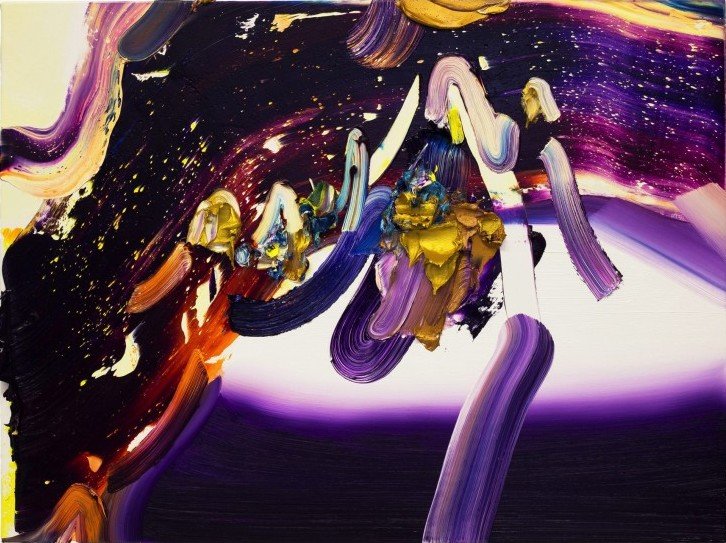 Erin Loree, Midnight Bloom, oil on canvas over panel, 18″ x 24″. Image courtesy of Angell Gallery
Erin Loree, Midnight Bloom, oil on canvas over panel, 18″ x 24″. Image courtesy of Angell Gallery
I began with small self-portraits and the work was slowly starting to become less photo-realistic and more expressive. I was looking a lot at Goya, Bacon and Cecily Brown at the time, and I felt a looseness developing in the work. Closer to the end of the four months with crutches, frustration was building up because of not being able to adequately express myself through painting. As soon as I could walk on my foot again, I felt a tremendous and indescribable sense of liberation. I needed an organic, immediate form of expression, so I gave up using references and decided to paint from my imagination. The works filled with color and life, becoming more about the material and the process. For the first time, I truly enjoyed painting.
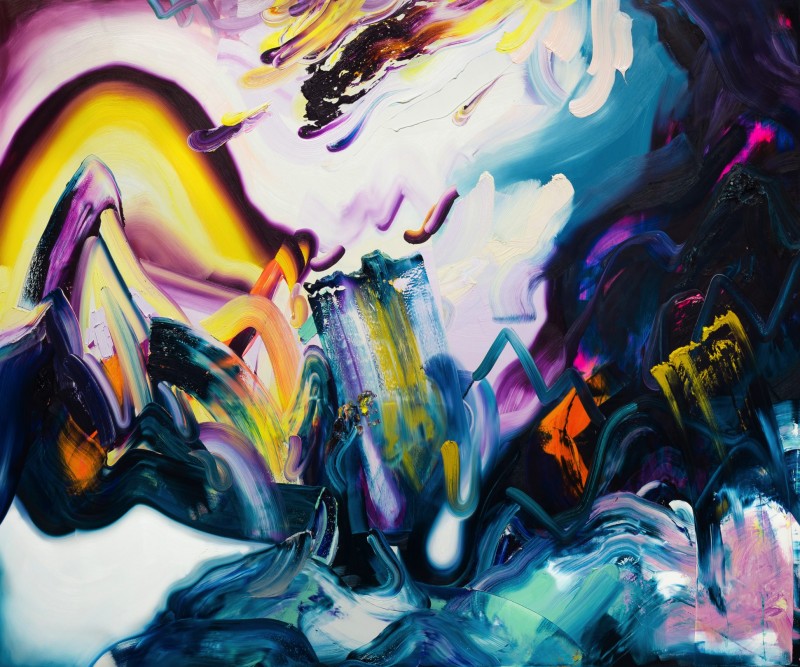 Erin Loree, Tug-O-War, oil on canvas, 100″ x 120″. Image courtesy of Angell Gallery
Erin Loree, Tug-O-War, oil on canvas, 100″ x 120″. Image courtesy of Angell Gallery
S.T: What are your major artistic or ideological influences?
E.L: In 2009, I studied in Florence for a year with 20 other students and our lives were saturated with Italian sculpture, painting, and architecture. I stood before the works of Bernini, Michelangelo, Caravaggio, and Masaccio to name a few. The beauty was heartbreaking! Only now am I beginning to see how they’ve played into my work. I studied these contorting figures and that dynamism is something I’ve never forgotten. This, coupled with Caravaggio’s use of chiaroscuro – as if the light is emerging out of the darkness – is something that I strive to maintain in my work. Although my work is no longer realistic or necessarily figurative, I still think about the thrashing lines, the curvature of the classic contrapposto pose, and the relationships between figures and forms in the work I’m making now.
 Erin Loree, Entanglement, oil on canvas, 80″ x 67″. Image courtesy of Angell Gallery
Erin Loree, Entanglement, oil on canvas, 80″ x 67″. Image courtesy of Angell Gallery
Other artists that have had influence on my work include Goya (particularly his Black Paintings – the idea that those works weren’t made to be shown gives us a real sense of the raw honesty in the work – Francis Bacon, William Blake (paintings and poetry), Rumi, Lawren Harris, Emily Carr, Harold Klunder, Cecily Brown, Inka Essenhigh, Tomory Dodge, and Gerhard Richter.
My process also been particularly influenced by Zen Buddhist philosophy and Taoism. In the work I try to cultivate “mindfulness” and what is known in Zen as the “beginner’s mind”. This promotes a deep awareness, an openness and receptiveness, which makes room for spontaneity and discovery within each moment of the painting process.
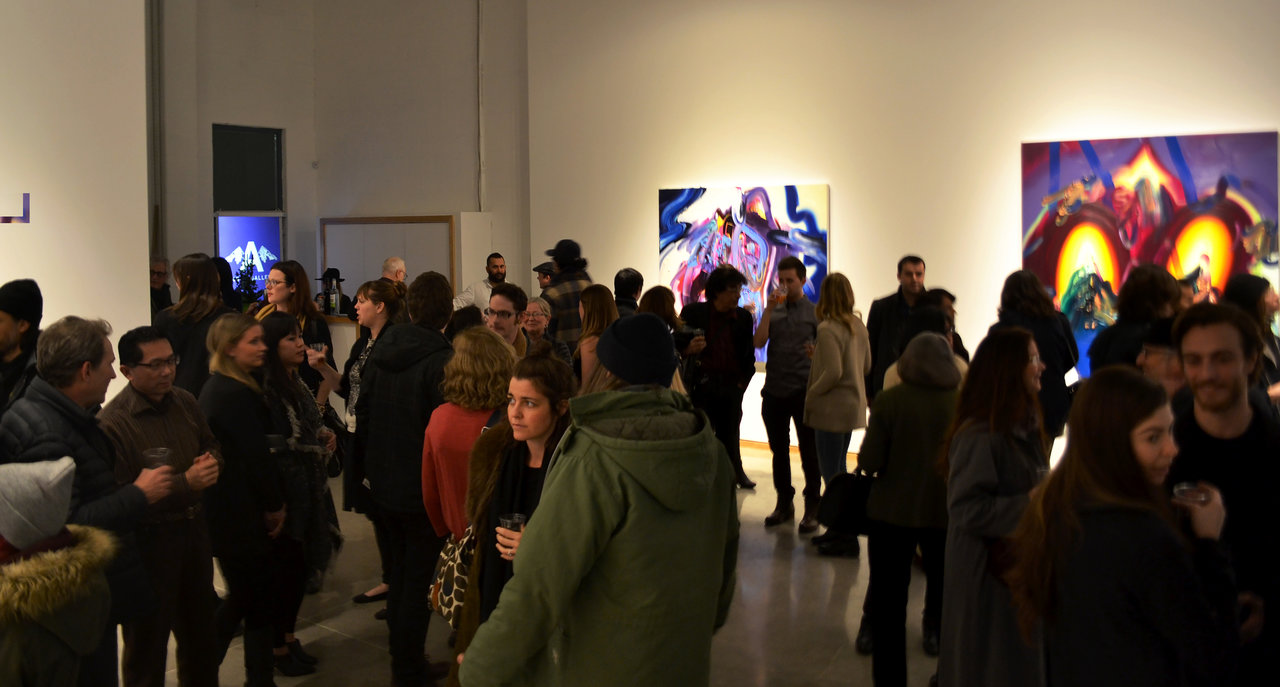 Opening Reception of Erin Loree’s exhibition at Angell Gallery, January 8, 2016. Photo courtesy of the artist
Opening Reception of Erin Loree’s exhibition at Angell Gallery, January 8, 2016. Photo courtesy of the artist
Simon Termine
Exhibition information: Erin Loree: Midnight Bloom, January 8 – 30, 2016, Angell Gallery, 1444 Dupont St., Unit 15 (entrance off Campbell Ave). Gallery Hours: Wed – Sat 12 – 5 p.m.

Wish I could have been there. The interview helped explain and made me understand the pieces more. Keep up the good work Erin. Proud. -Nen
A very insightful interview. Thank you for this.